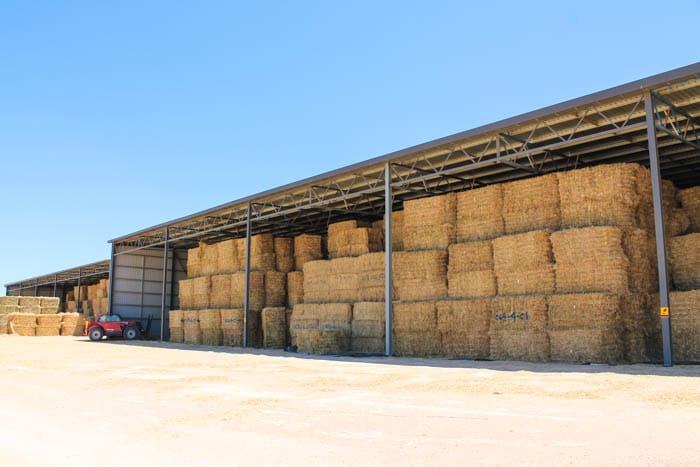AN OATEN hay agronomy project has received $2.2 million through the AgriFutures Export Fodder Program (AEFP), which aims to help growers increase productivity, improve fodder quality and reduce production risk.
AgriFutures Australia program manager, research and innovation, John Smith, said the new four-year project would address knowledge gaps in Australian export fodder agronomy and pathology.
“It’s a significant project that will focus on hay variety responses to changes in sowing date and nutrition on hay quality, disease impact, management intervention, and how these factors impact on return,” Mr Smith said.
“The project will work across all Australian producing areas, offering variety specific management information which will enable producers to increase productivity, improve fodder quality and reduce production risk.”
Project lead and WA Department of Primary Industries and Regional Development oat research agronomist, Georgie Troup, said the project would provide growers with the support they needed to enable them to increase the likelihood of meeting export quality demands.
“Producers can expect variety selection and nutrition advice, updated disease management guidelines and tools to better manage crops,” Ms Troup said.
“There will be trials located in WA, SA, Victoria and NSW, and we will be working with grower groups in key hay-growing regions to tackle regionally specific issues affecting export fodder production.
“By collaborating with a team of agronomy and pathology researchers across Australia, we will have the best opportunity to answer the key industry questions and support growers.”
The oaten hay agronomy project will be delivered in partnership with the South Australian Research and Development Institute, Agriculture Victoria, and the Department of Primary Industries New South Wales.
The AEFP has also funded a $100,000 workplace safety standards project to identify key areas of WHS risk.
An audit of processing facilities will be led by Australian Fodder Industry Association CEO, John McKew, in conjunction with WHS specialist Training Compliance Australia, to deliver strategies to alleviate processing risks.
Fodder market snapshot
- The Australian export fodder industry has supplied forage to countries across the world for more than 25 years;
- Key export fodder markets include Japan, China, Korea and Taiwan;
- In 2015, Australia exported 936,329 tonnes of fodder worth an estimated $383 million;
- Lucerne is the most commonly exported fodder in the global market, and Australia’s point of difference it is an exporter of oaten hay;
- The majority of Australia’s export fodder is produced in Western Australia and South Australia.
Source: AgriFutures Australia


HAVE YOUR SAY